Free Y1 maths worksheets: Writing numbers
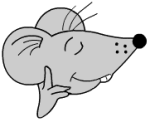 As a teacher of older children in the primary range I have always been amazed by the weird and wonderful ways that children write the numbers from 0 to 9, even though they will all have been taught how to do this at school, either in reception or year 1.
As a teacher of older children in the primary range I have always been amazed by the weird and wonderful ways that children write the numbers from 0 to 9, even though they will all have been taught how to do this at school, either in reception or year 1.
A simple rule – start at the top of the number. These three maths worksheets help with this. Start at the black dot and follow the direction of the arrow. Trace over the grey numbers with a pencil. Most children can write much more neatly with a good quality pencil than a pen because the pencil provides a much better contact on the paper and is less likely to slip or slide.
The first page goes from 0 to 5, the second from 6 to 9 and then a page showing all 10. Left handers might find the zero harder to do and will be tempted to go clockwise rather than anticlockwise. Try to avoid this as they will also probably write the letter o in the same way and make it difficult to join in a neat style later.
You might want to print these out several times so that plenty of practice can be given. Then see if the numbers can be written on plain paper.
Free Y1 maths worksheets: Writing numbers
 To get back to our counting pages for the early years here are two free maths worksheets to help with counting up to 10 . They are really examples of the kinds of pages that you can create or your children could make similar themselves. They go very well with the counting games activities – don’t forget to use these in conjunction with the worksheets.
To get back to our counting pages for the early years here are two free maths worksheets to help with counting up to 10 . They are really examples of the kinds of pages that you can create or your children could make similar themselves. They go very well with the counting games activities – don’t forget to use these in conjunction with the worksheets. Making lists is a very good way to develop good organisation and clear thinking. The first of these lists (days of the week) is a ‘closed’ list ie only a small number of possible items. If they don’t yet know all the days of the week use this as good practice at remembering them.
Making lists is a very good way to develop good organisation and clear thinking. The first of these lists (days of the week) is a ‘closed’ list ie only a small number of possible items. If they don’t yet know all the days of the week use this as good practice at remembering them.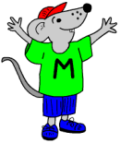 A couple of free worksheets providing opportunities for adding small numbers together. Notice with these that there is no help in the form of a number line or things to count. These pages are aimed at showing whether young children are beginning to know the basic number bonds – similar pages can easily be written and also provide an opportunity for a little ‘colouring in’. Keep the numbers low – just up to 5 and totals up to 10.
A couple of free worksheets providing opportunities for adding small numbers together. Notice with these that there is no help in the form of a number line or things to count. These pages are aimed at showing whether young children are beginning to know the basic number bonds – similar pages can easily be written and also provide an opportunity for a little ‘colouring in’. Keep the numbers low – just up to 5 and totals up to 10. Some simple counting here, but also practice with writing numbers down. Counting is easy when there are just a few, but when counting more than 7 or 8 it is easy to forget which ones you have counted, especially if they are randomly placed. Even harder if you are a five year old and not quite sure what comes after 7!
Some simple counting here, but also practice with writing numbers down. Counting is easy when there are just a few, but when counting more than 7 or 8 it is easy to forget which ones you have counted, especially if they are randomly placed. Even harder if you are a five year old and not quite sure what comes after 7!  As a teacher of older children in the primary range I have always been amazed by the weird and wonderful ways that children write the numbers from 0 to 9, even though they will all have been taught how to do this at school, either in reception or year 1.
As a teacher of older children in the primary range I have always been amazed by the weird and wonderful ways that children write the numbers from 0 to 9, even though they will all have been taught how to do this at school, either in reception or year 1. This week we are going to have another look at measurement and standard metric units of measurement. However, in year 1 measurement is much more about comparisons.
This week we are going to have another look at measurement and standard metric units of measurement. However, in year 1 measurement is much more about comparisons.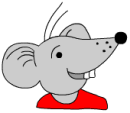 Children need plenty of practice with counting on to work out simple addition. The aim of this is to get them familiar with the numbers and after a while they will begin to be able to give answers without counting on: in other words they begin to know the answers. Knowing addition bonds up to 5 in year 1 is just as important as knowing tables becomes in later years. If children do not know that 3 + 2 is 5 without counting it will slow them down enormously and make working out 30 + 20 or 300 + 200 so much more difficult.
Children need plenty of practice with counting on to work out simple addition. The aim of this is to get them familiar with the numbers and after a while they will begin to be able to give answers without counting on: in other words they begin to know the answers. Knowing addition bonds up to 5 in year 1 is just as important as knowing tables becomes in later years. If children do not know that 3 + 2 is 5 without counting it will slow them down enormously and make working out 30 + 20 or 300 + 200 so much more difficult.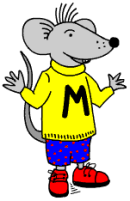 Continuing on the earlier theme of making number stories so that young children see that maths is related to the real world. The first looks at addition. Ask your child to write a simple number story for the sums. Ideas are provided but of course it is far better if they come up with their own sentences. (eg mum ate 2 rolls and dad ate 3 rolls. They ate 5 altogether.) The second looks at subtraction. One example is on the sheet. There are several ways of saying the subtraction sign (take away, less than etc). Encourage these different ways.
Continuing on the earlier theme of making number stories so that young children see that maths is related to the real world. The first looks at addition. Ask your child to write a simple number story for the sums. Ideas are provided but of course it is far better if they come up with their own sentences. (eg mum ate 2 rolls and dad ate 3 rolls. They ate 5 altogether.) The second looks at subtraction. One example is on the sheet. There are several ways of saying the subtraction sign (take away, less than etc). Encourage these different ways. A very simple pair of worksheets looking at recognising rectangles. As children develop they should begin to realise that some shapes are subsets of others. For instance, rectangles are a special kind of quadrilateral. Ask your children what it is about the shape which makes it a rectangle (opposite sides equal and at right angles). Can they see other rectangles in the real world ( eg tv screen)?
A very simple pair of worksheets looking at recognising rectangles. As children develop they should begin to realise that some shapes are subsets of others. For instance, rectangles are a special kind of quadrilateral. Ask your children what it is about the shape which makes it a rectangle (opposite sides equal and at right angles). Can they see other rectangles in the real world ( eg tv screen)?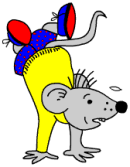 Two maths worksheets here on simple addition. However, there is not any help with either of these in the form of pictures to count on, or a number line. Five year olds will usually need something to help them. At home this could be a bag of buttons or beads or 1p coins, or if nothing is available there is always a set of fingers! All numbers add up to less than 10 at this stage. Over time children will begin to learn them and will also gain confidence with counting.
Two maths worksheets here on simple addition. However, there is not any help with either of these in the form of pictures to count on, or a number line. Five year olds will usually need something to help them. At home this could be a bag of buttons or beads or 1p coins, or if nothing is available there is always a set of fingers! All numbers add up to less than 10 at this stage. Over time children will begin to learn them and will also gain confidence with counting.